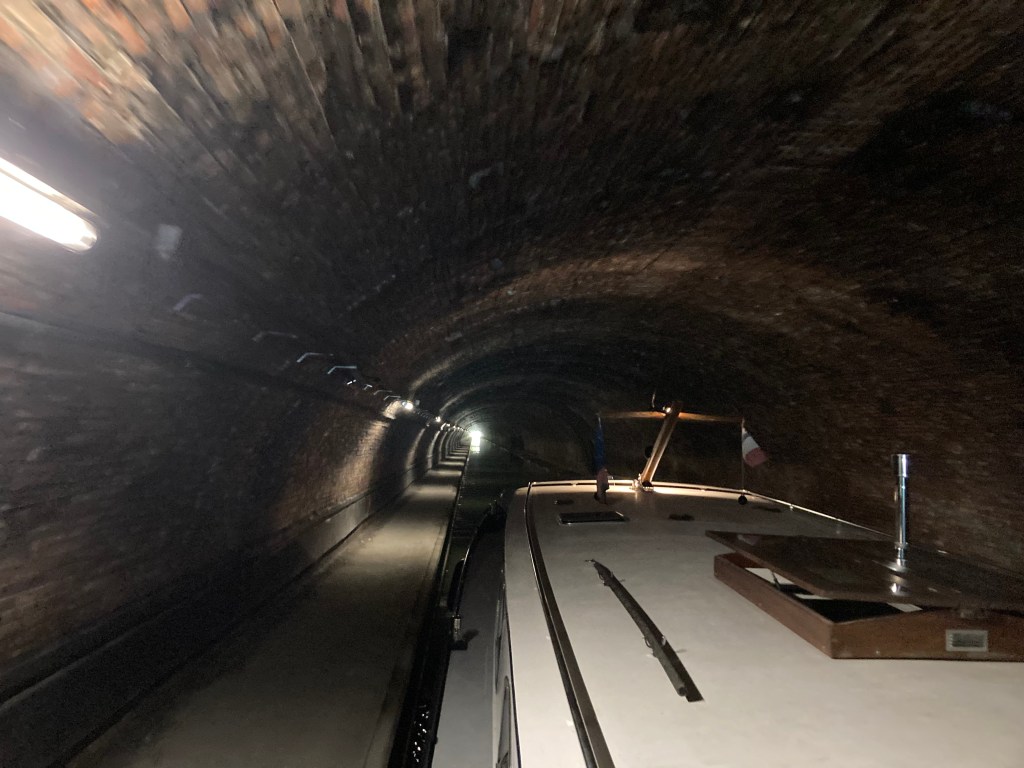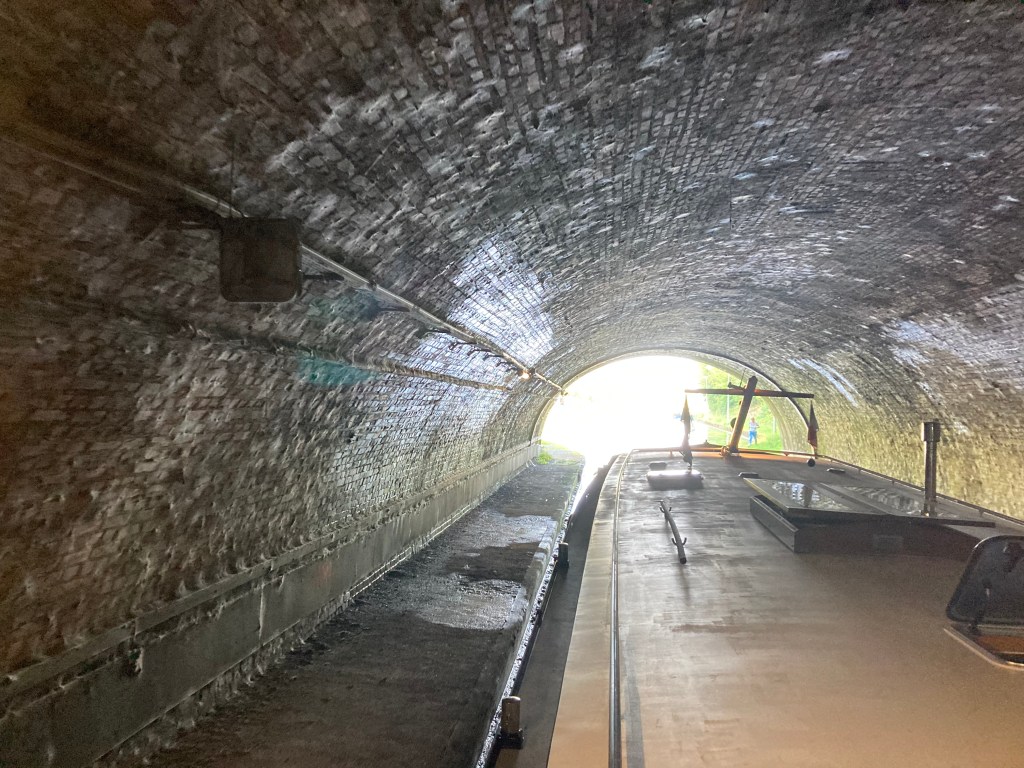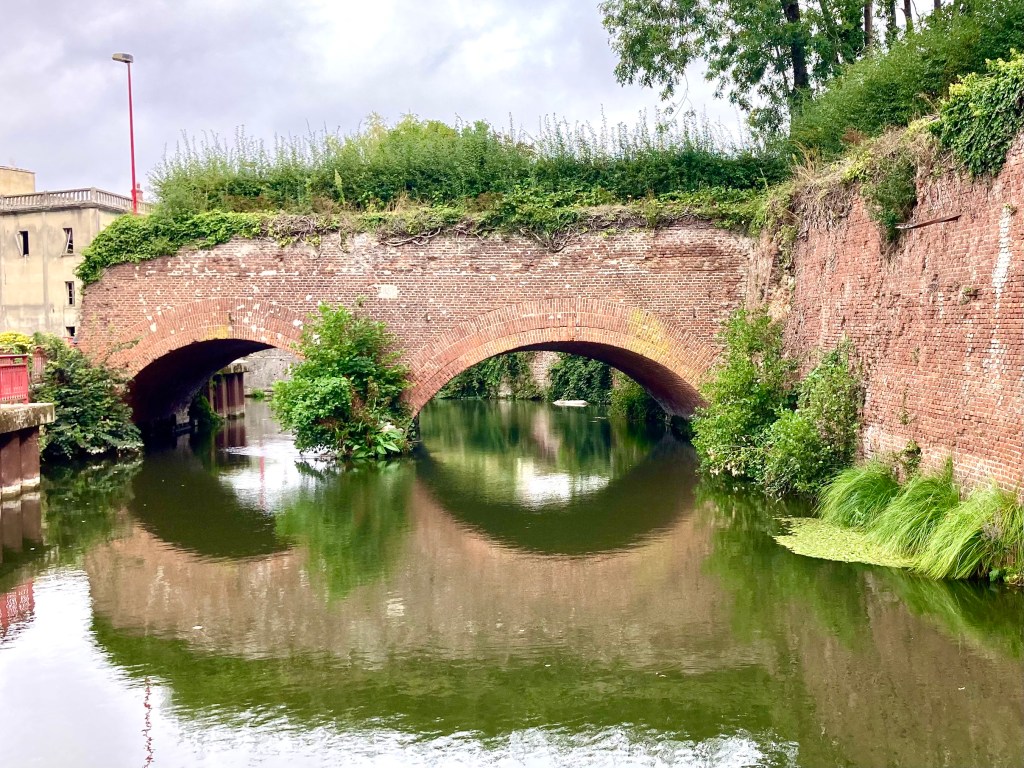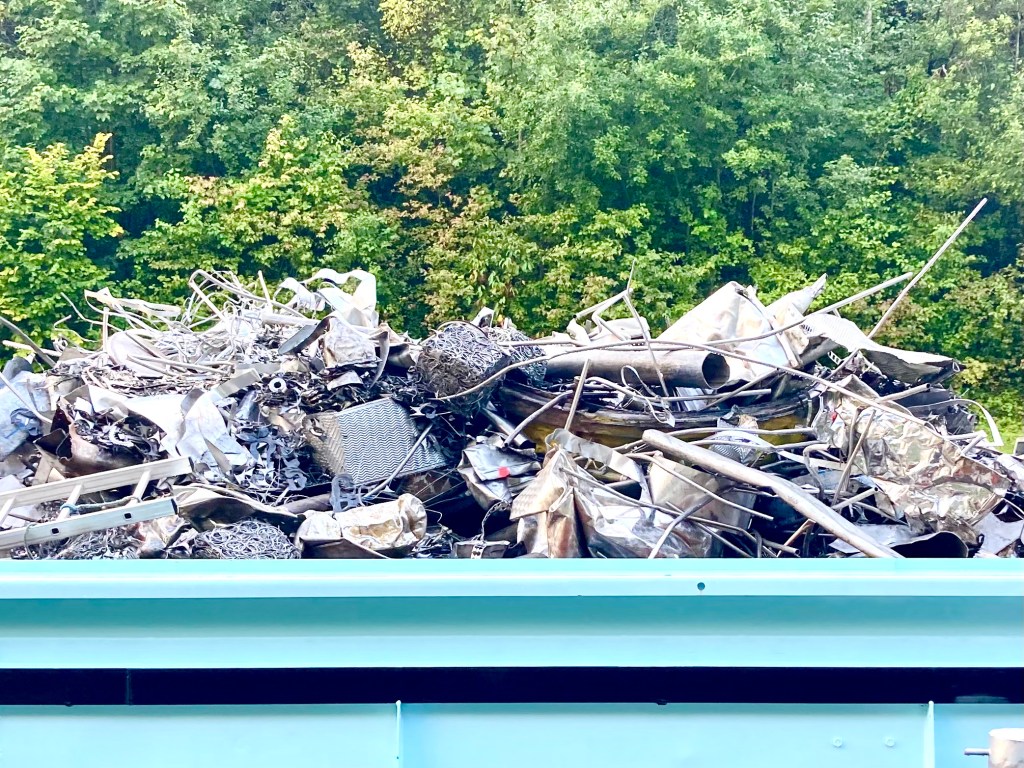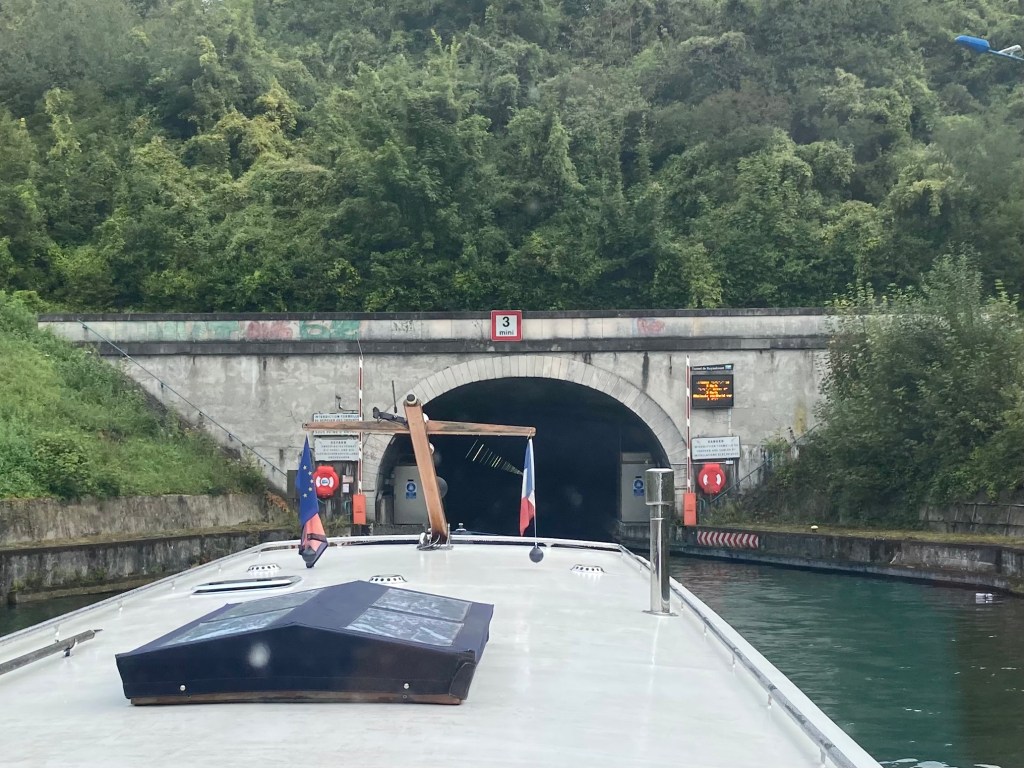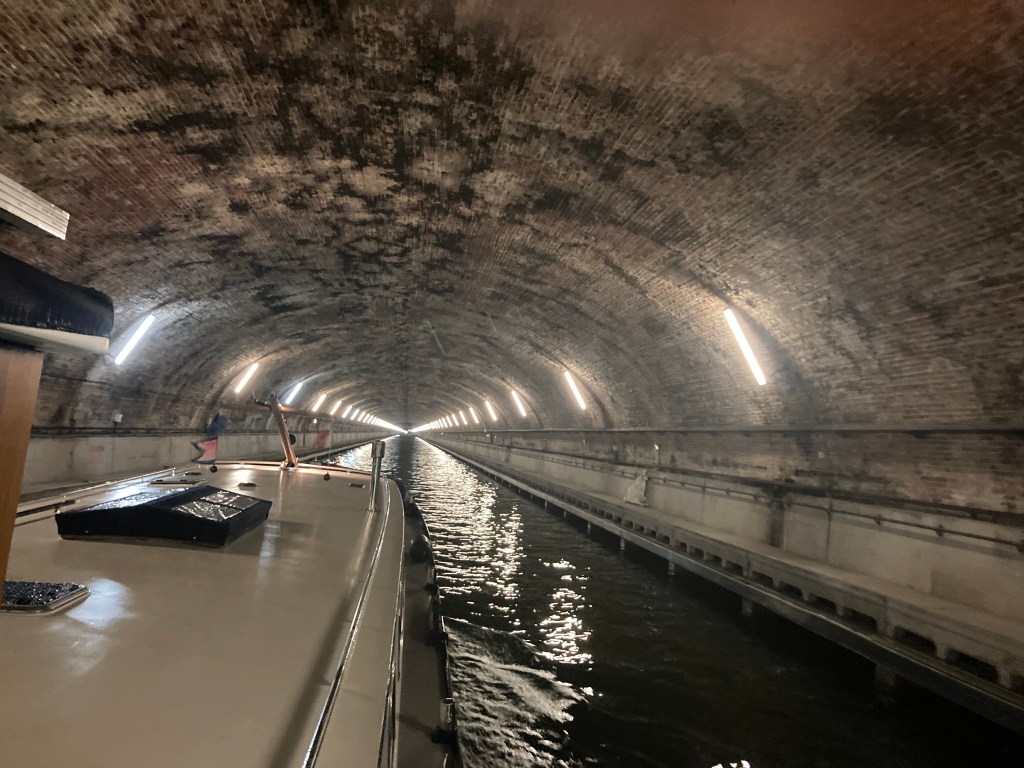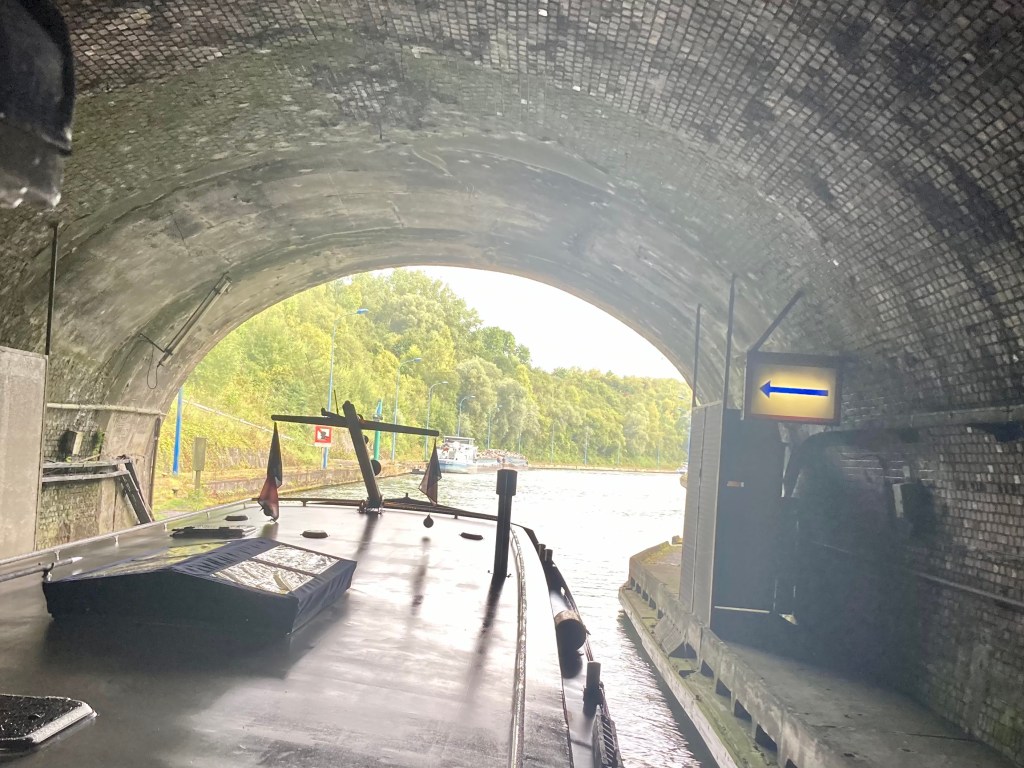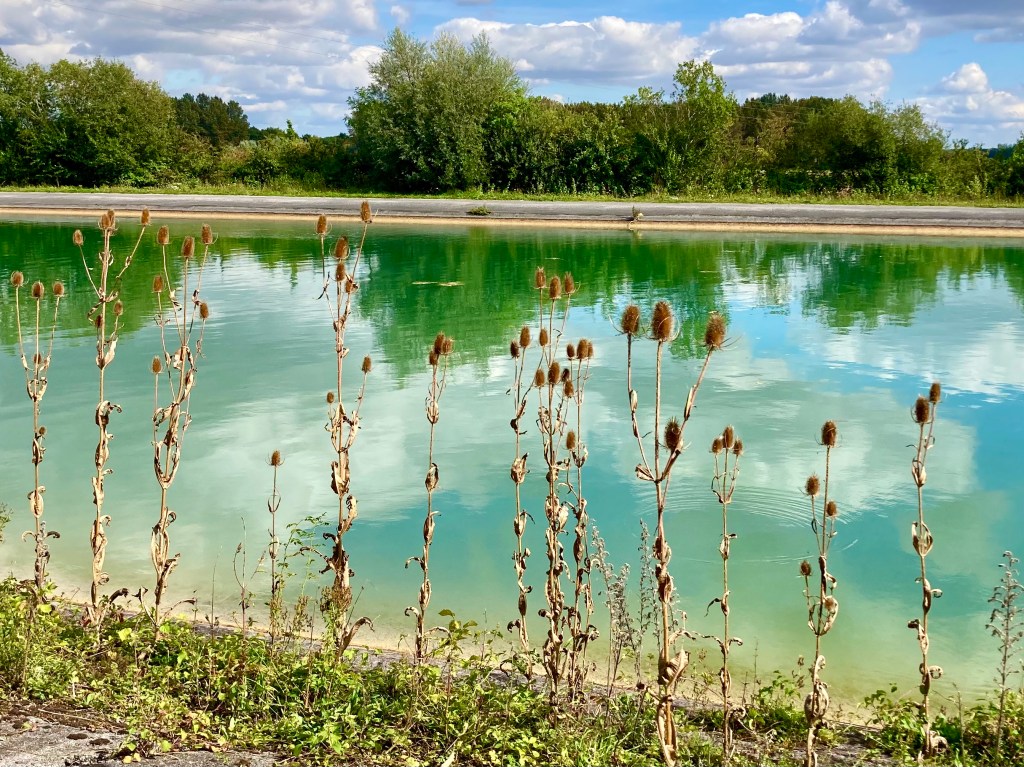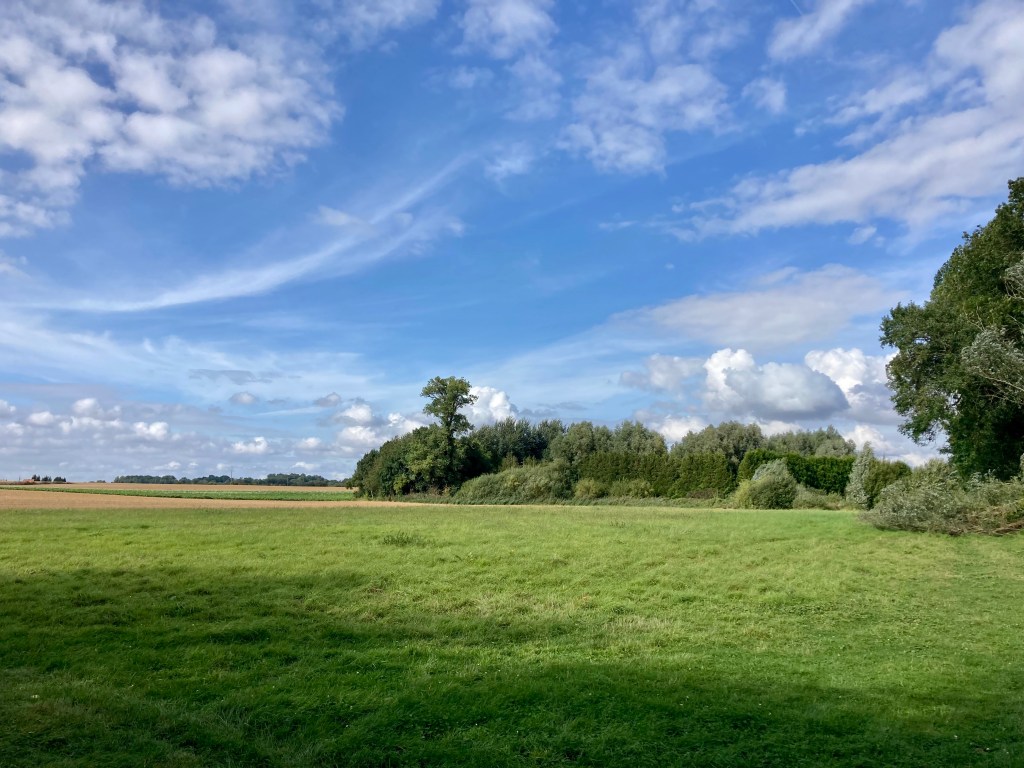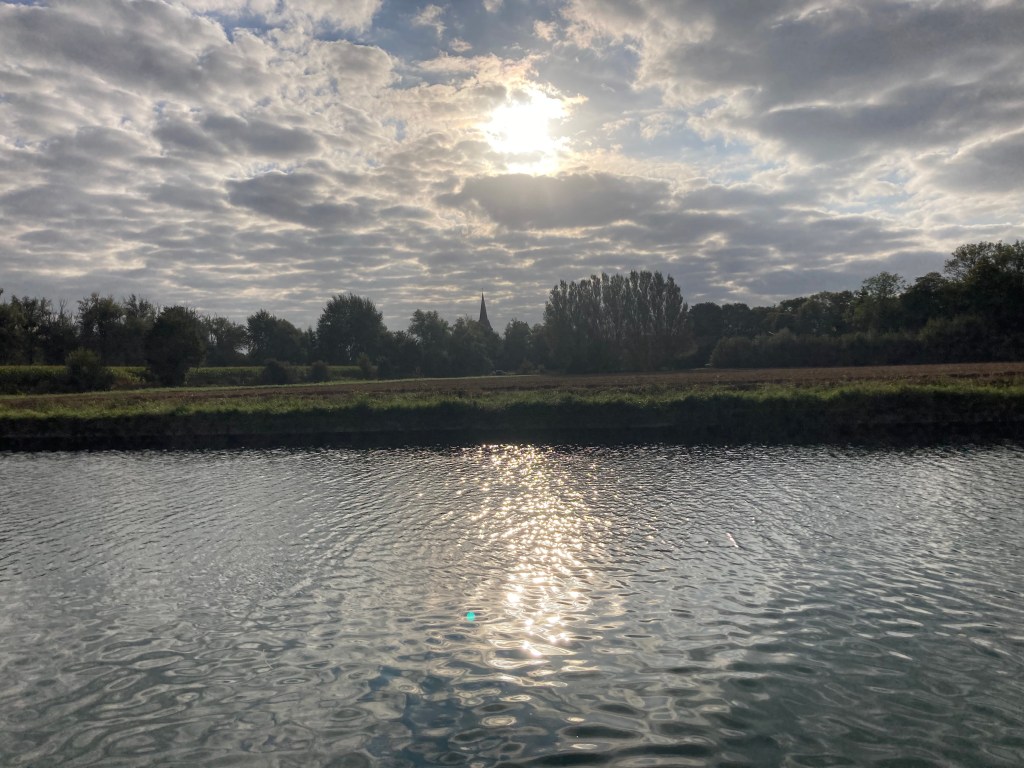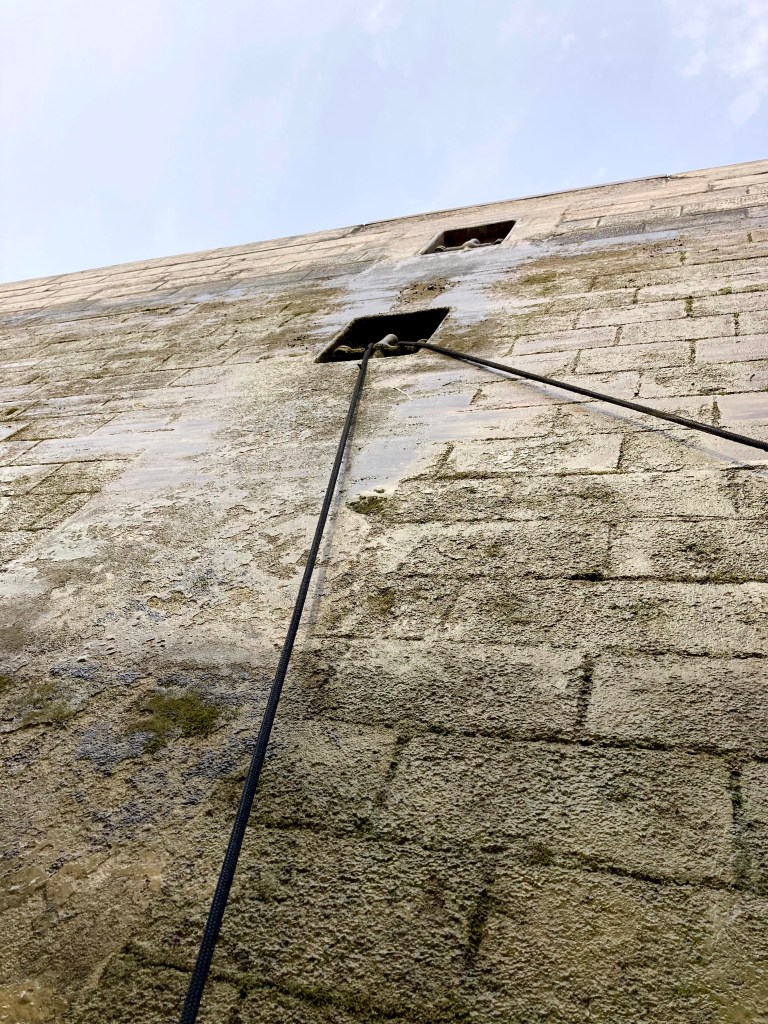Almost five and a half years ago we arrived in France on Calliope at the mouth of La Somme. This was our introduction to boating in Europe, and when at the end of La Somme we turned right onto the Canal du Nord we thought we were really now among the big barges of the continent. We scuttled down to Pont Leveque, looking at the ‘huge’ freycinet barges in awe, and glad to be off this mighty canal at the end.
We certainly gained experience in those years, in the size of locks, of barges, and of waterways in general. Good experience, that we have enjoyed hugely.
We have also found out more about the canal itself, started in 1908 to allow better transportation of coal; halted and the work partially destroyed during WW1; not re-started until after WW2; finally opened in 1966. It is the only canal built in France to the intermediate dimensions between the Freycinette and the huge modern barges.
And now soon to be abandoned when the new Seine-Nord Europe canal is open to traffic. Its is all rather sad – a 95 kms canal through great countryside, so needed 60 years ago and already defunct.

So when, on September 8th, we slipped our ropes at our Pont L’eveque mooring and went through the lock (putting our trusty remote control into the required letterbox) we went with a bit more confidence, but still humbly. If we have learned one thing in life it is not to be smug!
We would be getting used to a different style of lock again – always interesting – how will the bollards be spaced, both on then quay and down the wall; will there be floating bollards; will the lock movement be fast or slow; how do we contact the lock keepers to say we are coming through????? This one, at Libermont, is smaller than some at the Northern end.

Nonetheless this canal calls for our Nautic Talk sets again! I was against having these, but now find them so useful when we have to move back and forth in a lock to allow us each to move ropes down the bollards in the wall – they are rarely spaced so that we are directly in front of a set forward and aft!
It took us 5 days cruising to go from the bottom to the top – albeit they were short days! We rather like to set off at about 0930 and arrive at our next mooring between 1200 and 1300, in time for lunch. Then we have a relaxed afternoon and evening to enjoy whatever surroundings our mooring offers us.
So here are our stops, and any adventures worth reporting.
1. Port L’Ercheu – we stopped at this mooring, way out int the country, on our way South 5 years before. We don’t know why it is called a port, because if is a relatively short quay miles form anywhere. There was a village of Ercheu in the past, obliterated in WW1.


It was a hot when we arrived – a beautiful day for swimming and for washing down the decks! The water at the top of the canal is beautiful – so clear – and hasn’t had a chance to be polluted. It felt very good to swim in it.
On the way to Ercheu we went through the first of the two tunnels on the canal. Panneterie is only 1 kilometre long, getting boaters set up for the 4.5 kms tunnel ahead! Five years ago it was our first tunnel in Calliope, so approached with some apprehension, but this time it was quite straightforward.

But perhaps the most interesting thing about the tunnel was being told before we went in that there was a a boat in distress at the other end, with divers down in the water. So we would have to stop.
It turned out to be a Dutch working barge that had got rope so badly twisted around its propellor that divers were called out to cut it off – and even they found it a tough job.
We waited in the shade, wishing we could help, and having our lunch.

Back to Ercheu – just to include one memory of the serene sunset we enjoyed up there amongst the fields.
2. Péronne – the next stop was also one we had used on the way South. It is a small port so we had phoned ahead to make sure there was space for a 65 foot peniche like us. There was, so PMT (Pre Mooring Tension) removed for the day!
The journey there was uneventful, apart from a small slow visitor, a change of scenery, and a new style of lock gate – so maybe uneventful after all!
There are long mostly empty quays on the canal at Péronne, but these are subject to quite a lot of wash from the commercial barges who work long hours. So we went into the little port there, next to and run jointly with a camp site. The entrance is slightly tricky due to some shallow water, but it is marked with tall red poles and with Stu taking it slowly we were soon moored up on a pontoon.

The channel in is quite deep and relatively clear of weed, but to the side the weed grows thickly from the bed, spreading fingers this way and that as the flow changes.

The setting is quite rural; in fact the main, interesting and historic, town is a good kilometres walk, but well worth the effort.
We tied up behind a cruiser belonging to some new UK friends (met briefly at Pont L’Eveque) and were able to get too know them better over a glass or three of wine later that evening.
We walked into Péronne, being in need of food and drink. I tried to resist taking photos but these three give an indication of the town – the typically Northern French town hall, the bullet marked church, and the more ancient fortifications. There are plenty of information boards around the town, in English as well as French; a place to gain some history lessons.
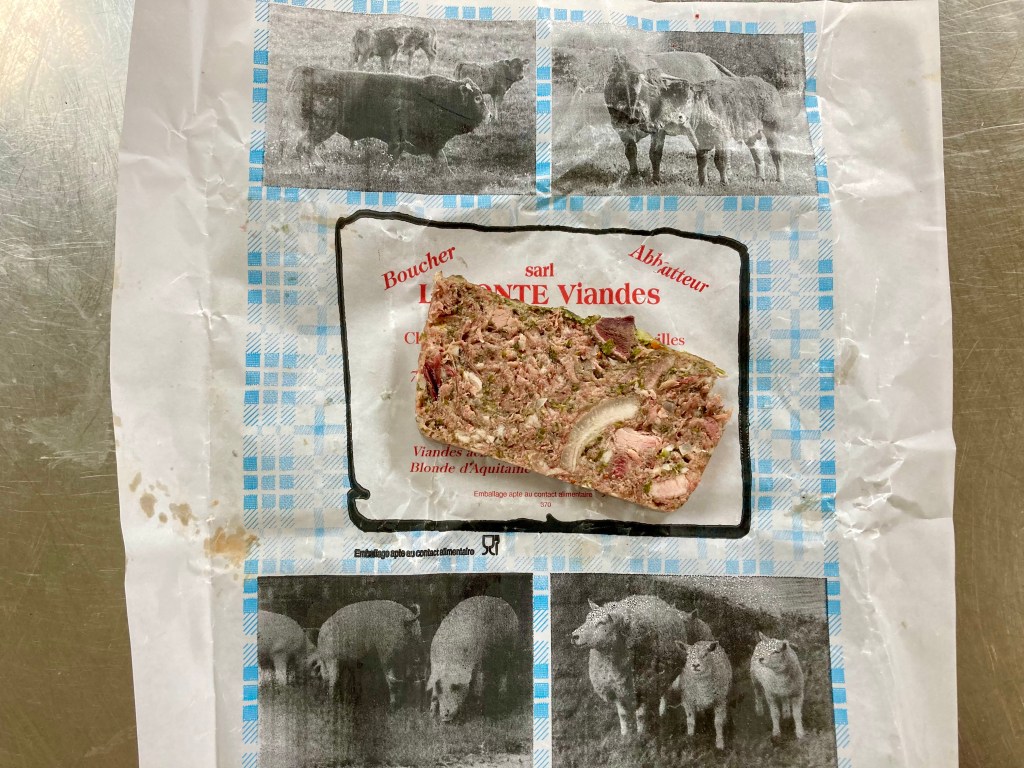
Next morning I did walk back into town, for fresh baguette and for flamische, the local speciality – a kind of leek pie. I went looking at a boulangerie; a mistake. A helpful French lady took me to a little butcher and charcuterie in a side street where I found good flamische. Yum!
I also came away with some of his dried ham, local beer, and paté de tête, shown here on his wonderful butcher’s paper.
And I did remember the bread too.

Back on board Captain was ready to cast off and reverse back onto the main canal, keeping those red marker posts carefully to one side.
3. Ytres, southern end of Ruyaulcourt Tunnel. We had come down from the Panneterie tunnel towards Péronne and the Somme basin, so now we needed to climb once more, up 5 locks to the Ruyaulcourt tunnel. We were pleased to find the first lock being prepared for us, and with no other boat in sight we went in and took possession, choosing a nice central position where we could use bow and stern ropes.

A fair amount of rapid French on the VHF and shouting down into the lock alerted us to the fact that a commercial barge was approaching and we would need to move to the front of the lock – not our preferred position!

I think this is the lock where the new method of roping was deployed – my rope brought back from the bow to the first bit back, round a wall bollard, then to the second bit back.
Here I made a turn so that Captain could drive against it and keep Calliope in position – because there were no bollards within reach for the stern rope.
Each time I needed to take the rope up to the next level Stu slackened the drive on the rope, I made as quick a change as I could, and then back to driving against it.
All this with Anti-lope, a big commercial barge, breathing down our necks, in a friendly kind of a way!
It worked a treat, although I am glad we had our communication devices for this!
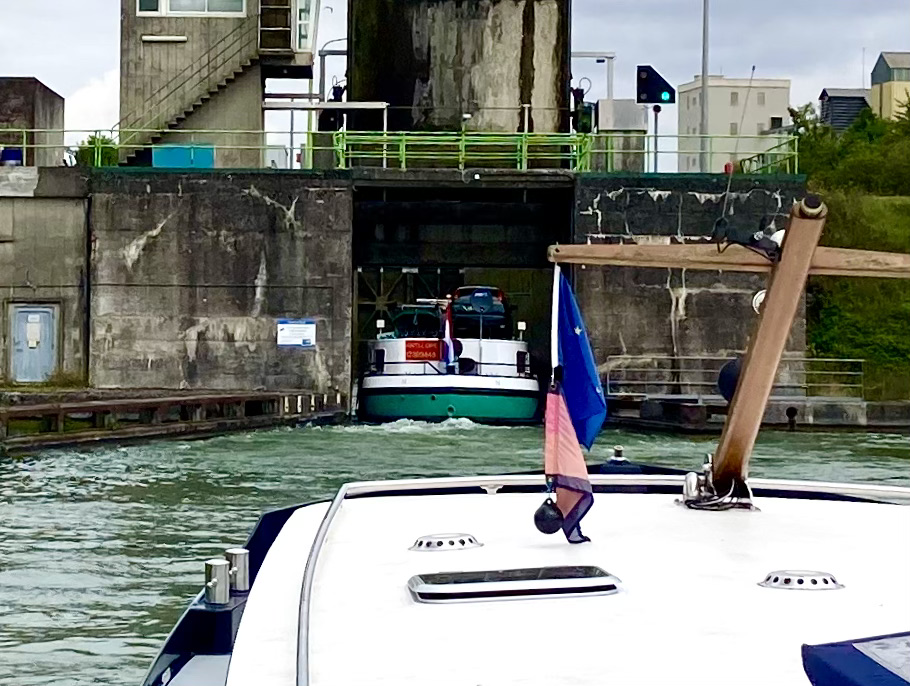
When we came out of that first lock of the day we let the commercial barge go ahead of us – so that we could follow her into each of the next 4 locks. Although we still needed to use our new roping system it was easier to do at the back of the lock, at least for us.

The afternoon saw Anti-lope disappear into the Ruyaulcourt tunnel, and us stop for the night.

What an incredibly magical place to stop. Probably we were not far from human habitation, but the cut leading into the tunnel isolated us from all around.
The wild life – we saw deer, a hare, many butterflies. birds we could identify and some that we couldn’t, picked blackberries and generally enjoyed the peace.
This photo gives a sense of the scale of isolation we had – Calliope is moored up at the end of the quay and I am standing just above the tunnel.
Mind you it did not feel quite so isolated when this beautiful barge full of scrap metal came in to moor in front of us while waiting her turn through the tunnel. She came in SO close to us I thought that she must touch Calliope – but despite how it looks in the photo she didn’t!

Later our new cruising companions arrived and this time we were able to go aboard their boat, Libellule, and strengthen the friendship.

And so to bed.
4. Sains-les-Marquion (2 nights) The following day would take us to our last mooring on the Canal du Nord for this year – maybe for ever, depending on when it is closed.
Our day obviously began with a trip through the Ruyaulcourt tunnel. It is a great tunnel – wide enough to make it easier than usual for the Captain, good lighting, and of the 4.35m length there is a section of just over a kilometres in the centre of double width, allowing barges to pass and this increasing the traffic through.
We were out into bright sunshine, open country and farmland, five locks down, and passing canal traffic.
After a few hours Calliope came to the Sains-les-Marquion mooring – well spaced yellow topped bollards, hidden in long grass! But we found them. And later Libellule glided in behind us too.

I liked mooring there – most walkers and cyclists were on the other side of the canal where there is a better pathway, so quite private.
(It makes me sound a bit snooty and a loner! Really I am neither, but it is nice to have a bit of space to oneself isn’t it?)
It was a great time fo year to be out walking. The butterflies were plentiful, the teazels at their statuesque best, and, for me, plenty of farmland to look out over. But apart from my walk we had a gentle relaxing day after all the locks and the tunnel. In fact we felt so good here that we decided to stay for a second, whilst Libellule continued on their journey.
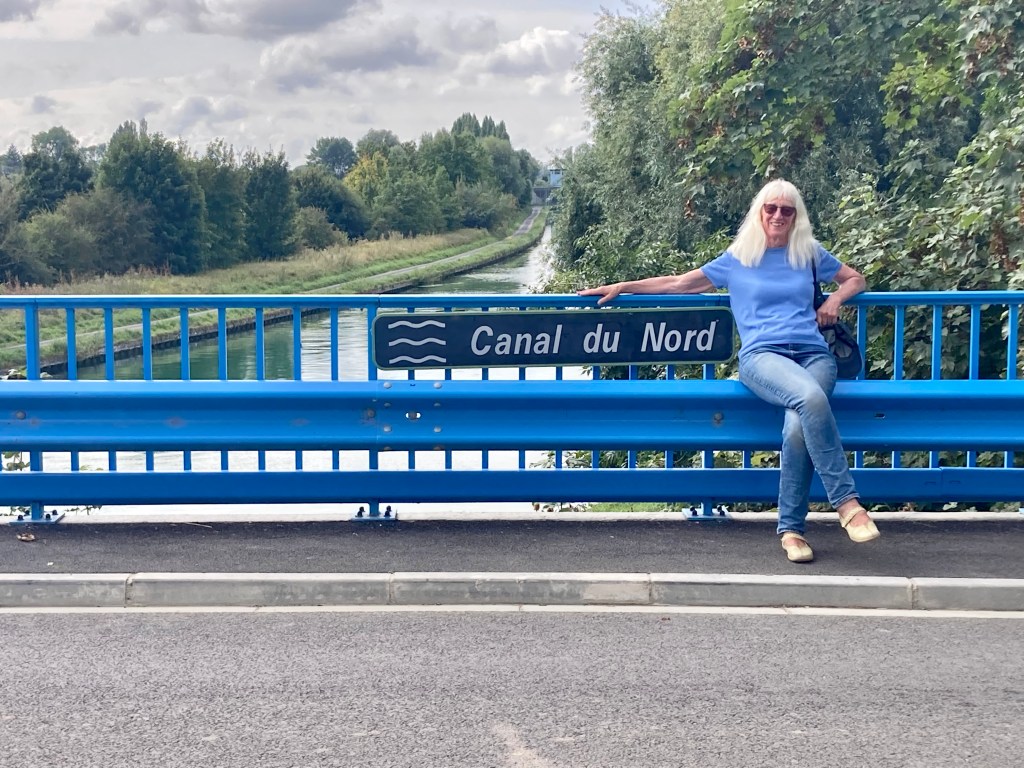
In the morning we went over the canal to see the actual village of Sains-les-Marquion.
It is a small village with farming at its heart – more so in the past, but still tractors and cows to be seen.
Here are some of the cows – I like cows!
The white ones are the marvellous French Charolais, famed for the beef that is produced from them. I think that the young brown calves are Limousin, but I am not sure. Please correct me!
Before we leave this mooring – our last on the Canal du Nord – I must include some of the superb skies that gathered around us.

We did moor up once more before we left Canal du Nord – just before the lock at Marquion, some 500 yards from where we had moored the night before!
Not too long too wait for the lock to be ready for us and a following freycinet before we continued our ‘avalant’ (downward) journey.
The locks continued to keep us alert – rarely the same configuration of bollards twice in a row – but, without being smug, we had by now mainly got a system for each.

We were counting down the kilometres until we would join the Canal de la Sensée at Arleux.
Not because we were keen to leave this soon-to-be lost canal, but because we were looking forward to reaching Lille in a few days time and meeting up with sone of the family.

It was not long before we were at our final lock on the Canal du Nord journey – Palluel – our final 6.2m down from the heights.
As in the previous lock that morning we followed a commercial barge – enough room for us both with us hanging in at the back with our new roping technique.

The junction with the Sensée is big and wide, as one would expect with the amount of commercial traffic, both freycinet and ‘giant’ size, that passes through.
We joined our new canal following Vanguard, the turquoise barge we had followed through the last two locks.
So endeth the Canal du Nord for us. Will we get to travel it again before it closes? I don’t know – certainly parts of the big new canal are due to open next year and maybe that will mean the the Nord’s closure. For us, on that day, it was on down the Sensée looking for the Scarpe Superieure, towards Arras, where we planned to spend one night just off the big waterways. And that will be the start of the next blog. 😊





